Dunkirk 77 years on: Army signaller who was there remembers Operation Dynamo
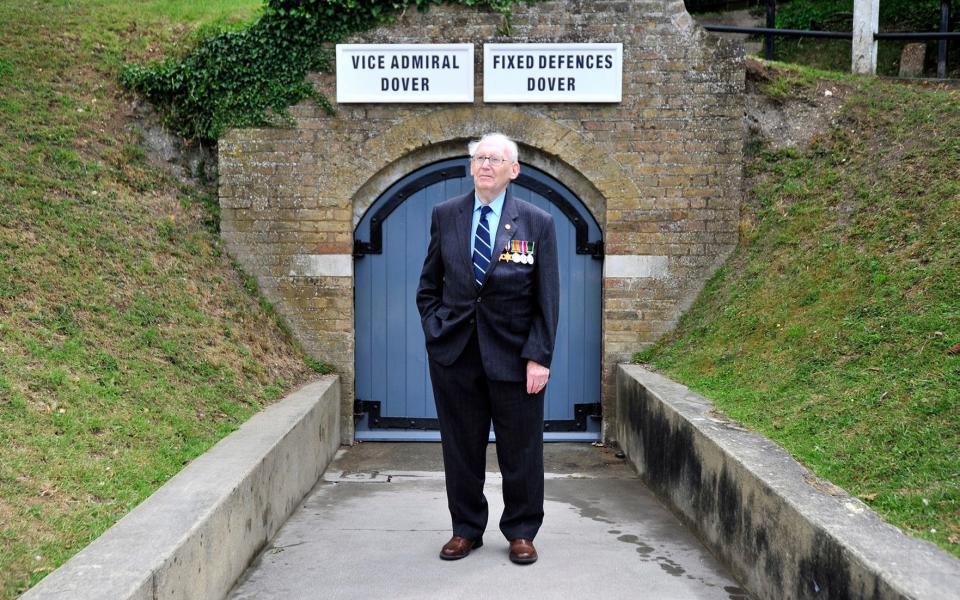
Exactly 77 years ago today, an armada – from destroyers to tiny fishing vessels – left Dover to rescue hundreds of thousands of British and Allied troops stranded in Dunkirk. One man – Richard Sheen, now 98 – had a bird’s-eye view of Operation Dynamo.
In Dover Castle there’s an old photograph that still has the power to disturb. It shows the Nazi top brass, including Hermann Göring, gazing across the Channel from France at the white cliffs of Dover.
The photograph was taken on 1 July, 1940, a crucial moment in the history of these islands. The Dunkirk evacuation had taken place a month earlier.
The Battle of Britain was about to start. These vulpine figures in trench coats believed it was only a matter of time before they strutted on English soil.
Among the people who stood in their way was a young man who, at the very moment the shutter clicked, may well have been staring back at them. Between 1939 and 1942, Richard Sheen – Dick to his friends – spent a lot of time looking at the French coast.
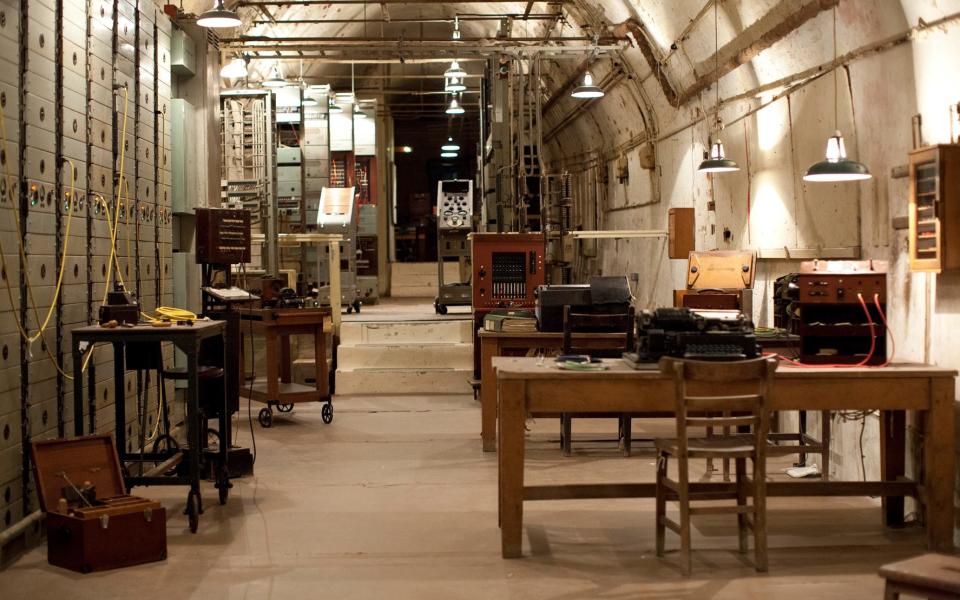
He was an army signaller, billeted in Dover Castle, and from the window nearest his bunk he had ‘a complete bird’s-eye view’, not just of the harbour, the Strait of Dover and the French coast, but of raw history.
From the Dunkirk evacuation through the Battle of Britain to the critical weeks when the little port of Dover itself was on the front line against Nazism, ‘I saw everything that was going on.’
Richard Sheen, now 98 years old, is one of the last living links to a period and place in which the fate of Britain – and of freedom itself – hung by a thread. In the Second World War, atop Dover’s famous chalk cliffs, the medieval castle was the tip of the sword with which the country kept Nazi Germany at bay. For hidden in the bomb-proof tunnels beneath the ramparts was the control centre of defensive operations in the English Channel.
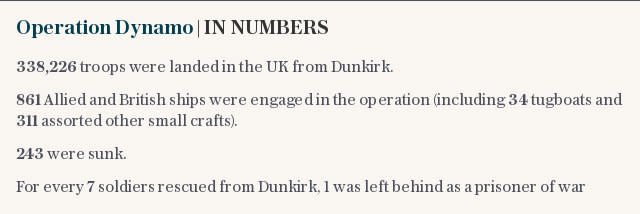
From here was masterminded the evacuation of the British Expeditionary Force from Dunkirk in May and June 1940. From here, during the aerial battles that ensued over south-eastern England, Signalman Sheen of the Royal Corps of Signals used information supplied by the precious new technology of radar to plot enemy aircraft crossing the Channel, and communicated that information to anti-aircraft batteries along the coast.
‘You’ve got this extraordinary situation in which people are stuck in tunnels in the ground, organising what is going on above ground. They’re not in the middle of the action but they’re part of the action,’ says Rowena Willard-Wright, a senior curator at English Heritage, which owns Dover Castle.
The old tunnels have been turned into a museum and visitor attraction, and this bank-holiday weekend the castle is holding a WWII Weekend that promises ‘a full-on 1940s experience’ in commemoration of its critical wartime role.
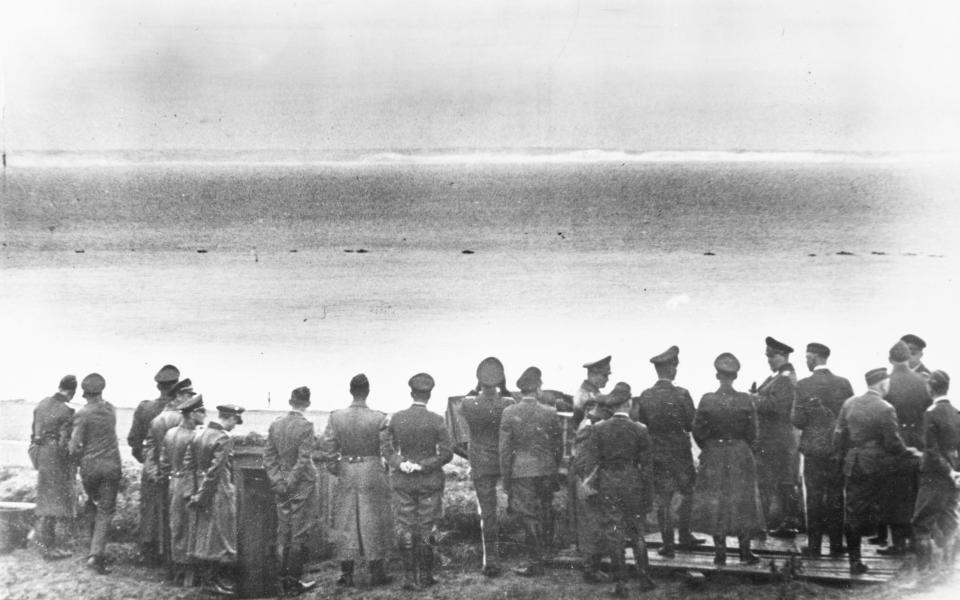
The castle also features in Dunkirk, directed by Christopher Nolan, with an all-star cast that includes Tom Hardy, Mark Rylance, Kenneth Branagh and Harry Styles, released in July.
The film is an epic retelling of a story that has become deeply etched in the national psyche, though Willard-Wright acknowledges that, 77 years on, the events of 1940 are ancient history for many people. The first-hand testimony of veterans such as Sheen is thus all the more precious. A Londoner by birth, he has lived for the past half-century in West Wales with his wife Joy, whom he met and married during the war.
When I visit them at their home, there is a row of cards on the dining-room mantelpiece celebrating their recent wedding anniversary – the 72nd. Sheen ran a successful printing business, is a pillar of the local Rotary Club and has three children, seven grandchildren and four great-grandchildren.
An enviably rich life, but his memories of war remain vivid, and he has recently published a memoir entitled Fading Footprints. Describing the first he knew of the Dunkirk evacuation, he says, ‘Quite early one morning I could hear all this noise and I looked out and the whole harbour seemed to be full of little boats, with destroyers moving about, giving instructions. And shortly afterwards they were off. It was an amazing sight.’
Deep in the tunnels – which date from the Napoleonic era – 21-year-old Sheen was working eight-hour shifts in the Anti-Aircraft Gun Control Room (and carving his initials, DS, on the tunnel walls, next to scores of others dating back to the early 19th century).
Dunkirk’s Operation Dynamo was coordinated from another section of the tunnels by one of the war’s heroes, Admiral Sir Bertram Ramsay, who also masterminded the naval landings on D-Day (he was killed in a plane crash in early 1945).
‘We only had a glimpse of him at odd times,’ says Sheen. ‘We were mostly stuck in the Gun Control Room and as soon as we were finished we were up.’ By ‘up’ he means in the barracks, called Cliff Block, where he slept and kept a lookout on history in the company of young men from all over Britain.
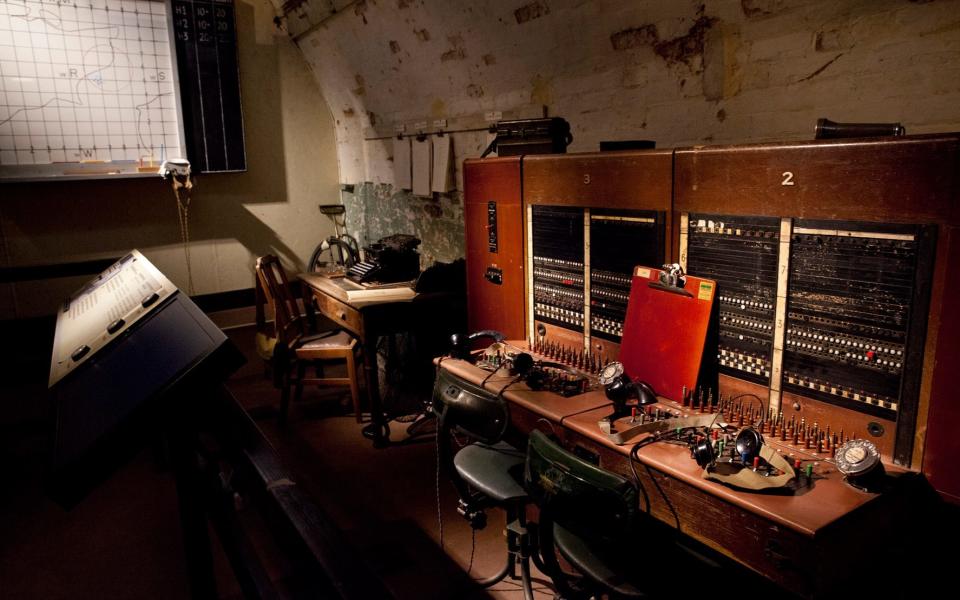
On the door of the block some wag had hung a sign that said ‘Alcatraz’, because Dover Castle was a punishment posting –Richard Sheen ended up there after a forbidden (though innocent) fraternisation with a young woman in the ATS. Cliff Block was knocked down a long time ago.
In its place is a statue of Admiral Ramsay, and if you stand next to him and look out to sea you get an idea of the view that Sheen had from his window: the harbour directly below, France on the horizon 20 miles away.
When the ships came back from Dunkirk he spent his off-duty hours down at the harbour helping the ‘dishevelled’, rifle-less troops ashore and on to railway carriages at Dover Priory station.
‘I heard afterwards that Churchill was afraid that if the Germans didn’t get them at Dunkirk they’d get them in Dover. So as soon as they were off the boats they were on the train and away,’ he says. However, the Dunkirk crisis was simply to mutate into the Battle of Britain.
One morning the dive bombers, the Stukas, literally went past our window. They looked so large
Between July and mid-September 1940, Sheen channelled ever more critical intelligence in the musty confines of the Gun Control Room, and when ‘up top’ he witnessed the battles for real: the dogfights in which shot-up planes spiralled into the sea, the attacks on the submarine base in the harbour. ‘One morning the dive bombers, the Stukas, literally went past our window. They looked so large.’
Over the next four years, Dover and its Straits became known as Hellfire Corner. The port was a constant target for German planes and heavy artillery stationed at Cap Gris Nez to the south-west of Calais. Shelling, says Willard-Wright, was far worse than bombing: ‘There was no warning. Dover itself was absolutely devastated.’
Sheen would watch puffs of smoke go up on the French coast, count to 80 and look down to watch the shells landing in the harbour ‘like someone throwing pebbles into a pond’. There were odd moments of levity amid the mayhem, such as the strange sport between the barrage balloons – put up to disrupt enemy aircraft – and the Messerschmitt Bf 109s.
As fast as the RAF hoisted the balloons, the German fighters would come over and use them for target practice. Sheen watched one plane shooting down the last remaining balloon then pretending he’d been hit by all the ack-ack going up. ‘He did a “falling leaf”, almost down to sea level,’ says Sheen.
‘Then, the saucy devil, he flattened out and shot back to France.’ Leave provided little respite. While visiting his mother in London, Sheen doubled as an ARP warden in the Blitz (‘My brother-in-law said to me, “They’re looking for people with steel helmets”’), then endured a hellish bus journey back to Dover.
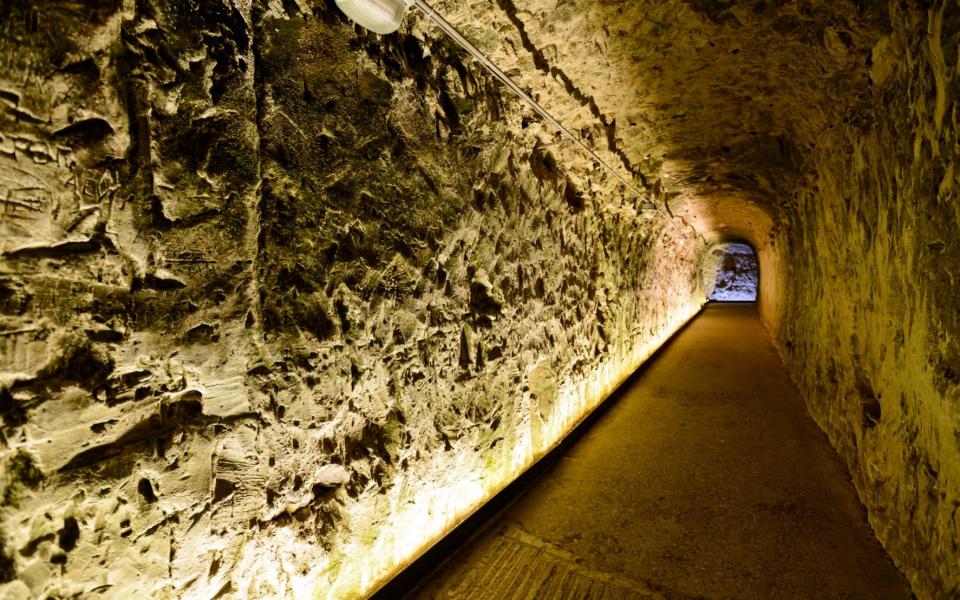
‘And when I got back the double siren went, which meant shelling. But I was still glad to be back. Preferable to the Blitz. The droning all night they had to put up with. It was quite eerie.’
It was another journey back to Dover – this time by train – that gave Sheen his most bizarre wartime experience. At Charing Cross he was joined in his carriage by a ‘lady with a put-on, posh accent’ and a large suitcase, who travelled all the way to Dover Priory with him.
‘“Excuse me,” she said when we arrived, “is there going to be a taxi?” Well, we hadn’t seen a taxi in Dover for a couple of years, so I asked where she was going. “The Dover Hippodrome,” she replied. ‘So I picked up the case and on the way there I thought I could feel something moving around in it but I didn’t think anything more of it at the time.’
The woman said she was ‘an actress’ and when they reached the Hippodrome she gave him a ticket to her show. She turned out to be the snake dancer Arimand Banu, whose stage show featured her naked save for two strategically draped pythons. ‘She was very clever with them, I must say,’ says Sheen.
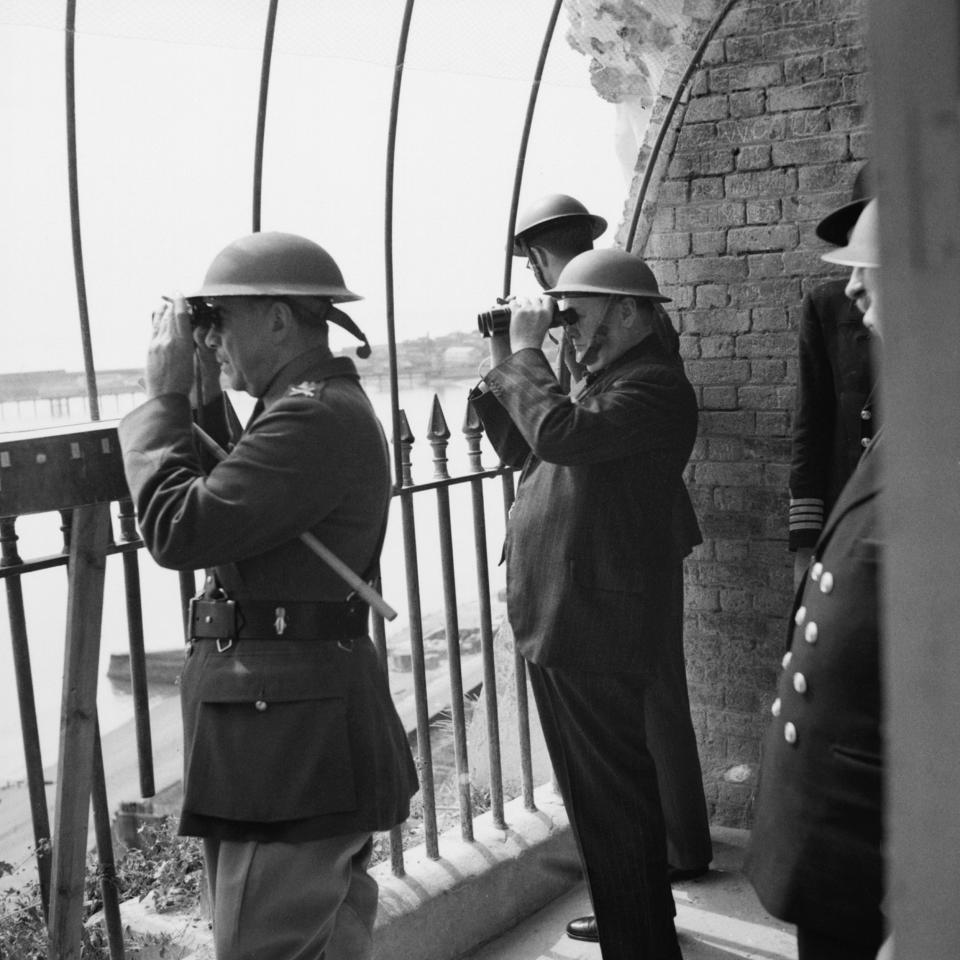
In February 1942 Sheen witnessed the so-called Channel Dash, when the German battleships Scharnhorst and Gneisenau made a daring break from Brest in Brittany to German ports on the North Sea. As the ships approached the Dover Strait, with fighter cover above, six Fairey Swordfish were scrambled from RAF Manston in Kent – a decision that left Sheen and his colleagues in the Gun Control Room ‘completely stunned’ as they knew these slow and unwieldy biplanes stood no chance against the Bf 109s.
Sheen plotted the progress of the Swordfish – until the planes disappeared off the screen. All six planes were shot down without laying a finger on the ships. Their leader, Lt-Cdr Eugene Esmonde, was awarded a posthumous Victoria Cross. Shortly after this episode, Sheen was posted away from Dover, first to the Midlands and then to Cheltenham.

But cosy desk jobs were not for him. On 12 June, 1944, six days after D-Day, he landed in Normandy (on Juno Beach) with his signals regiment, and did not complete his war service until March 1946, having taken part in the Allied push through northern Europe and across the Rhine into Germany.
In that time he made just one visit home, in April 1945, to marry Joy. They had met at a hop in 1943, in Joy’s home village in Hertfordshire. ‘I was quite taken,’ admits Joy. ‘And after how many weeks did we get engaged?’ says Sheen, as if he could forget. ‘Six,’ she says unerringly.

In all the moments of uncertainty that preceded their wedding, when Sheen was on that Dover front line, there was only one occasion when he thought his number was up. During the Battle of Britain he was off-duty up in Cliff Block when the telephone rang – an officer in the Gun Control Room uttered a word that sent him scurrying down the spiral staircase into the tunnels: ‘Cromwell’.
This was the code word that signified an invasion was imminent. Dover Castle had been designated as a fortification ‘to be defended to the last’ and supplied with provisions to withstand a six-week siege – after which, if necessary, its defenders would blow it up.
‘Cromwell’ turned out to be a false alarm but it was not rescinded until the man now approaching his 100th birthday had had time to believe he had no future. ‘I really thought it was happening. A chill went up my spine. I thought, what chance have we got?’
WWII Weekend at Dover Castle is on today, tomorrow and Monday, 9.30am-5pm

